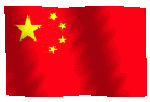| |


 Embassy Staff Embassy Staff
 Ethiopia-
Quick Facts Ethiopia-
Quick Facts











 Community
Service Community
Service
 Comments/Suggestions Comments/Suggestions
 Business Hours Business Hours
 Links Links
 News News

Contact Us
No.3 Xiu Shui Nan Jie
Jan Guo Men Wai
Beijing 100600
P. R. China
Tel: 0086-10-65325258
Fax:0086-10-65325591
E-mail:
[email protected]
|
ETHIOPIA
- QUICK FACTS
| Government |
Federal Democratic Republic |
| Head of State |
H.E. Dr. Mulatu Teshome (From Oct. 2013) |
| Head of Government |
H.E Mr. Hailemariam Desalegn - Prime Minister |
| Land Area |
1.1 million square kilometers |
| Population |
74 million (as of 2004csa) with annual growth rate of
2.73%. The population size is now estimated to have reached 88,013,491. |
| Location |
Ethiopia is strategically located in the Horn of Africa, bordered by the Sudan on the west, Somalia and Djibouti on the East, Eritrea on the North and Kenya on the South. Its proximity to the Middle East and Europe, together with its easy access to the major ports of the region, enhances its international trade. |
| Capital |
Addis Ababa, the city is the seat of the African Union Commission |
| Topography |
The country has a topography varying from as much as 116 m below sea level in the Danakil depression to more than 4,600 m above sea level in the mountainous regions. Ras Dashen, with an altitude of 4,620 m (15,158 ft), is the fourth-highest peak in Africa. The Capital City, Addis Ababa lies at 2400 meters above sea level. |
| Climate |
The country enjoys moderate temperature and pleasant climate, with average temperature rarely exceeding 20°c (68°F). The lowlands typically have sub–tropical and tropical climates. The average annual rainfall for the whole country is 850mm. In most of the high lands, rainfall occurs in two distinct seasons: the “small rains” during February and March and the “big rains” from June to September. |
| Rain fall |
500-1,000 mm (40 inches) |
| Languages |
Amharic, Oromigna, Tigrigna, Sidama, Afar, Somali and other local languages. English is a language of instruction in High Schools and Colleges. |
| Infrastructure |
Road: Satisfactory; Rail: Djibouti -Addis Ababa and under great expansion in other parts of the country Air: Addis Ababa (international), regional capitals and business towns are also served by domestic flights. Telecommunications: High quality landline and mobile telephone communication, telex, fax, internet services. |
| Currency Exchange Rate |
18.0179Birr =1 US$ (October 2012) |
| GDP Makeup |
Agriculture 41%
Industry 13%
Services 46.9% |
| Major export items include |
Coffee, Hides & Skins, Oil Seeds and Pulses , gold, natural gum, live animals, tea etc |
| Major Trading Partners |
China, Germany, USA, Italy, Russia, Saudi Arabia |
Natural Resources
| Huge arable land |
Out of the total 112.3 million hectares of land, about
56% is suitable for agriculture. Only 15% has been utilized so far.
|
| Rich mineral resources |
A number of them highly demanded in the international
market while metallic minerals such as gold, platinum, copper, iron,
nickel; industrial minerals such as feldspar, marble , quartz, kyanite,
dolomite, talc and graphite are the leading ones. |
| Abundant water resources |
Ethiopia has nine major river basins and a significant
number of large lakes in the Rift Valley System; suitable, among others,
for irrigated agriculture and hydroelectric production. |
| Population |
With a population of more than 80 million, Ethiopia
offers one of the largest markets in Africa. It also provides a low
wage of trainable and disciplined work force. |
| Tourist attractions |
Include historical, cultural, archeological, anthropological, scenic and wildlife resources. |
|



